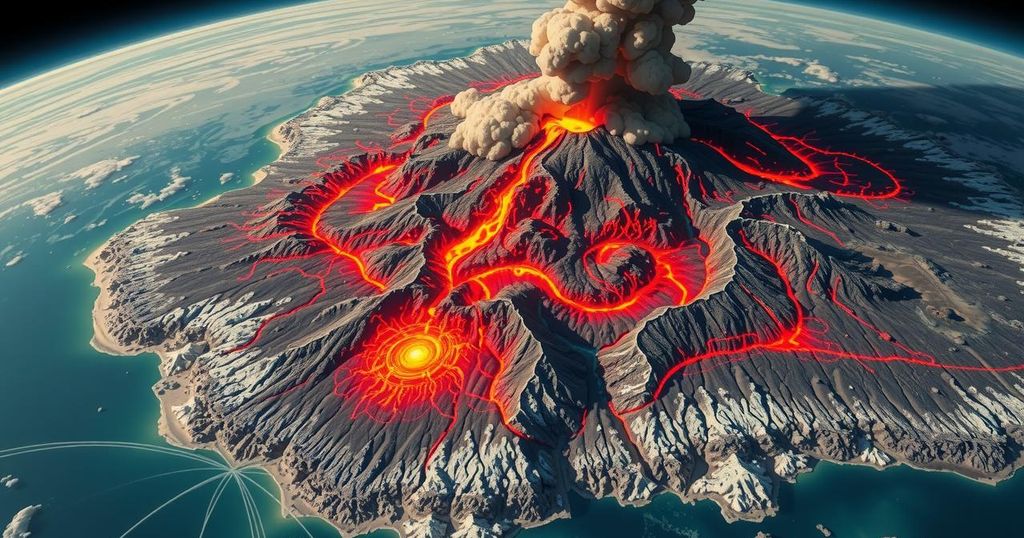A magnitude-5.8 earthquake hit Ethiopia’s Amhara region near Addis Ababa on January 4, 2025. The earthquake, occurring at a depth of 10 kilometers, prompted evacuations due to its potential links to volcanic eruptions in the Afar region. Concerns about the Grand Ethiopian Renaissance Dam (GERD) and regional water rights exacerbate the challenges following the seismic event, which is part of a troubling trend of increasing geological activity in the region.
On January 4, 2025, a magnitude-5.8 earthquake struck Ethiopia, affecting areas near Abomsa and the Amhara region, close to the capital city, Addis Ababa. The earthquake’s epicenter was located at a depth of 10 kilometers, as reported by both the Ethiopian Geological Institute and the US Geological Survey (USGS). Experts have indicated that greater seismic activity may still occur, potentially leading to stronger tremors.
In conjunction with this seismic event, Mount Dofan Volcano in the Afar region has begun to erupt, resulting in significant ground fissures. Authorities in Ethiopia have strongly advised the evacuation of thousands of residents to safer temporary shelters, emphasizing the urgency of these measures amidst the emerging volcanic threat.
Abbas Sheraqi, a geologist from Cairo University, commented on social media regarding the situation, asserting that the ongoing seismic activity might serve as precursors to further events. He speculated that increased volcanic activity could generate more lava and extend to nearby volcanoes, notably Fentale, which poses risks to densely populated areas. Sheraqi expressed his concerns for the population, particularly regarding the Renaissance Dam, and its implications for neighboring countries.
Negotiations among Egypt, Sudan, and Ethiopia concerning the Grand Ethiopian Renaissance Dam (GERD) have been ongoing for over a decade, with Egypt and Sudan striving to secure their water rights in light of Ethiopia’s unilateral actions regarding dam operations. The situation remains critical, especially following Egypt’s announcement last year that negotiations had stalled due to Ethiopia’s unwillingness to agree on mutual technical or legal solutions, heightening regional tensions.
Ethiopia is situated in a tectonically active region, making it vulnerable to seismic events and volcanic activity. Recent earthquakes have raised concerns about their increasing magnitude and frequency, prompting urgent action from local authorities. In addition to the earthquake, the eruption of Mount Dofan presents a dual crisis, necessitating immediate attention toward the safety of nearby residents. The longstanding geopolitical tensions surrounding the Grand Ethiopian Renaissance Dam further complicate the situation, as downstream countries, namely Egypt and Sudan, seek assurances regarding water safety and management.
The recent magnitude-5.8 earthquake and subsequent volcanic eruption in Ethiopia represent a significant natural disaster with potential repercussions for public safety and regional stability. The risks associated with seismic activity necessitate prompt evacuation and comprehensive disaster response measures. Moreover, the intertwined issues surrounding the GERD underscore the need for coordinated efforts among Ethiopia, Egypt, and Sudan to establish sustainable management of shared water resources. Without collaborative agreements, the probability of future tensions and crises remains high.
Original Source: www.egypttoday.com






